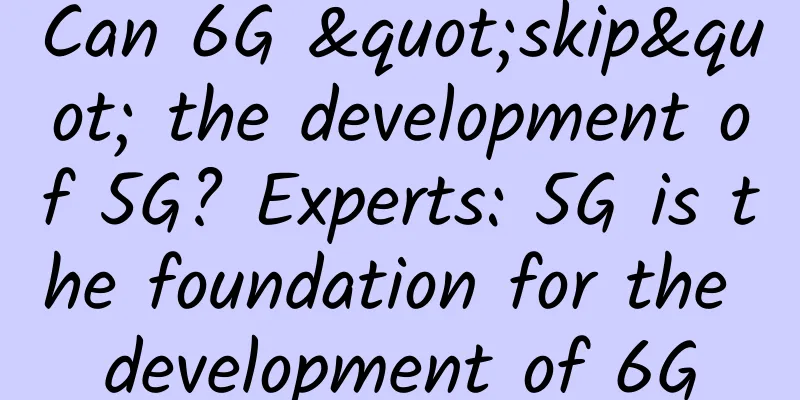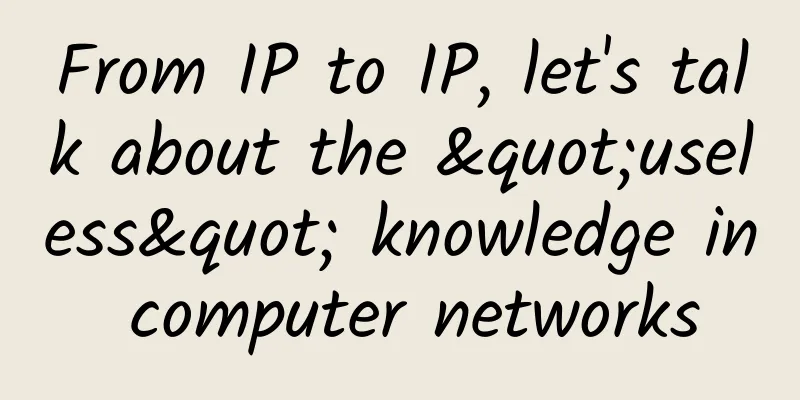The time is ripe, and it is expected that 2G/3G network withdrawal will be completed in 3 to 5 years

|
"Talented people emerge in every generation, and each leads the way for hundreds of years." In the field of mobile communications, 4G networks are currently the mainstream, and 5G networks have begun large-scale construction. The 2G and 3G networks that have been in operation for a long time have entered the end of their careers. Operators in many countries around the world have formulated "retirement" plans for them. Among them, operators in Japan and the United States have completely "retired" 2G networks. In my country, the three major operators have orderly reduced their investment in 2G and 3G networks and withdrawn some 2G and 3G base stations that have no business. In October 2019, the Ministry of Industry and Information Technology stated: "At present, the conditions for withdrawing 2G and 3G networks have gradually matured. Operators are encouraged to actively guide users to migrate to other networks and use limited frequency resources and network resources in the development of 5G and 4G mobile communication networks to reduce overall costs." This shows that the comprehensive withdrawal of 2G and 3G networks has officially been put on the agenda. Whether 2G and 3G can safely retire depends mainly on whether their successors can provide consistent services and whether enough users have completed network migration. According to analysis, the current conditions are basically mature and the network can be retired in an orderly manner. First, from the perspective of network coverage. my country's cities have long achieved continuous and deep coverage of 4G networks. Basically, in cities, 4G network connections will not be interrupted; in rural areas, 98% of administrative villages have achieved 4G network coverage, basically achieving services similar to 2G and 3G networks. In the field of Internet of Things, narrowband Internet of Things represented by NB-IoT (currently a component of 5G standards) has millions of base stations across the country and no longer relies on 2G networks. Secondly, from the perspective of network service quality. In terms of network transmission speed, 2G and 3G are naturally not comparable to 4G; in terms of voice services, VoLTE has gradually been commercialized in various regions across the country, replacing the original mode of falling back to 2G and 3G networks for calls, and getting rid of the dependence on 2G and 3G networks. Thirdly, from the perspective of user distribution. In the public user field, nearly 80% of users are 4G network users, and the remaining 20% are mainly feature phones (senior phones, backup phones, etc.), smart watches, etc. It can be said that the focus of public users' network use has long been on the 4G network. In the field of government and enterprise users, it is "a little troublesome". Before the NB-IoT network matured, at least hundreds of millions of IoT connections were developed based on 2G and 3G networks, and they were closely linked to solutions, so it was not easy to change. Finally, from the perspective of actual network usage, according to the base station monitoring data of telecom operators, some 2G and 3G base stations have long been in low-frequency use, with only a few terminals connected and a few megabytes of data traffic transmitted every day, but the relevant resource investment must continue, which is quite uneconomical. Regarding the withdrawal of 2G and 3G networks, first of all, in terms of time, referring to the time span from the announcement of the withdrawal plan to the complete completion of the withdrawal by telecom operators in countries and regions such as Japan and the United States, it will take about 3 to 5 years. Secondly, the order of whether to retire 2G or 3G first depends on the technical characteristics of the network and its value to the operator, and is not necessarily the order of 2G first and 3G later. For example, for China Mobile, the 2G network currently still carries many IoT devices and feature phones, while the 3G network is more idle, so it is expected that the 3G network will be retired first. China Unicom is just the opposite. The more mature WCDMA network carries many IoT devices and has become a cooperative network for international operators in China, so it is expected that the 2G network will be retired first. Thirdly, with regard to the handling of existing users, first, no new devices will be allowed to access the network, especially at the IoT device level. At the same time, the development of 4G, 5G, and NB-IoT terminals will be encouraged, including 4G feature phones and other terminals that match the usage habits of some existing user groups. Second, for existing devices, we will wait for existing devices to be updated. If the equipment is not updated at all, it is expected that subsidies and other means will be used to ensure equipment upgrades. Finally, the timing and method of 2G and 3G network withdrawal is expected to be a steady process, not a one-day shutdown. Instead, based on data analysis, base stations will be withdrawn one by one, and frequency bands will be given up MHz by MHz for 4G/5G use. A withdrawal ceremony will be held one day in the future to completely shut down the last base station. 2G has been with users for 20 years; 3G has opened the door to independent innovation in China's communications industry (TD-SCMDA). Although we are reluctant to say goodbye, we must see each other again. Thank you for being with us and take care. |
<<: Network | 5G secrets that operators don’t want to tell
>>: Thoroughly understand Cookie, Session, Token
Recommend
Under the epidemic, networks in various countries have failed, but Chinese operators are still the strongest at the critical moment!
Under the epidemic, what is tested is not only hu...
80VPS: Hong Kong/Japan/Korea/USA 1-16C cluster server starting from 800 yuan/month
A friend talked about cluster servers. I recently...
80VPS: US 8C cluster server monthly payment starts from 800 yuan, Hong Kong 8C cluster server monthly payment starts from 1000 yuan
Recently, some readers asked about cluster server...
IDC: Enterprise WLAN market grew strongly in the third quarter
The global consumer and enterprise wireless LAN (...
One picture shows the relationship between China Mobile, China Unicom and China Telecom
Now China Mobile, China Telecom and China Unicom ...
New electromagnetic wave router will enable unlimited bandwidth
UCLA researchers, with support from the Defense A...
CloudCone: $15/year KVM-512MB/15GB/5TB/Los Angeles data center
CloudCone is a foreign VPS hosting company founde...
NTT and Cisco jointly provide hybrid office solutions to lay the foundation for the future of work
We are entering a new normal in the way we work. ...
Talk丨Can positioning become a new growth point for LoRa technology?
First, an example: If you and your good friend ma...
China's 5G connections have reached nearly 430 million, accelerating the exploration of vertical application markets
By the end of 2021, nearly 8% of the world's ...
Huawei Software Development Cloud helps improve WeChat mini-program code quality
In the early morning of January 9, after more tha...
Huawei's Hu Houkun: Continuously empowering digital economic innovation, connectivity will head in these five directions
On December 6, at the 2021 China Unicom Partner C...
Who is selling personal information? Fighting against illegal activities requires starting with the entire industry chain
[[188850]] The educational information of ordinar...
International roaming fee reductions are aimed at the wallets of people traveling abroad
When traveling abroad, you always have to rent wi...
When you are with your friends and family, do you have to pass on the WiFi password by word of mouth? It’s not safe!
It's Chinese New Year! The Year of the Ox is ...







![[11.11] HostXen's bandwidth upgrade, recharge 100 yuan and get 20 yuan free, and add a new data center in Tokyo, Japan](/upload/images/67cabd2da9a2e.webp)

